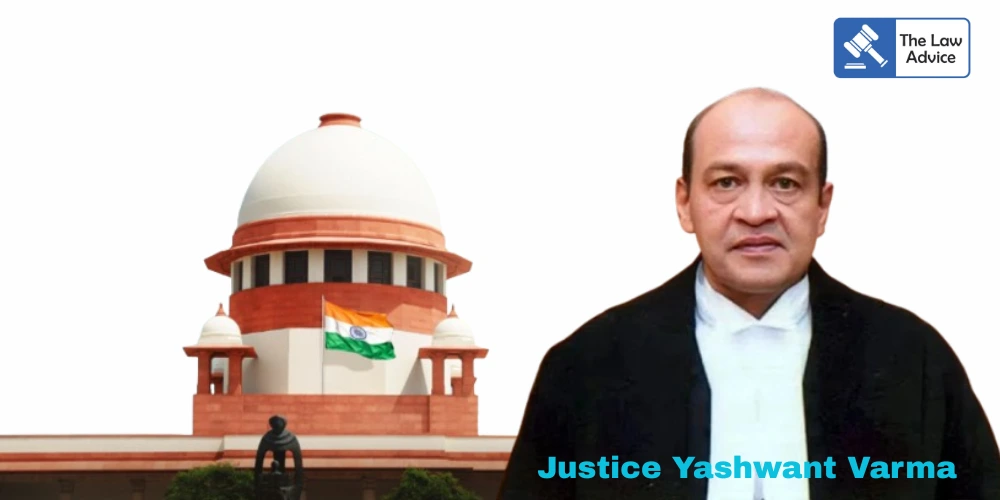New Delhi, July 30, 2025
In a case that has tested the limits of internal judicial scrutiny, the Supreme Court of India today reserved the petition of Justice Yashwant Varma, who had challenged the legality of the in-house inquiry process that found him guilty of misconduct. The top court ruled that once credible evidence of wrongdoing is available, the Chief Justice of India (CJI) is duty-bound to act on it not remain a passive observer.
The verdict comes months after burnt bundles of ₹500 notes were discovered at Varma’s official residence in Delhi following a mysterious fire, prompting serious questions about unexplained wealth and judicial integrity.
What the Supreme Court Held
Delivering the much-anticipated ruling, a bench led by Justice Dipankar Datta observed that the CJI is not a mute figurehead if material evidence of misconduct arises, especially from a committee comprising senior judges, the CJI is constitutionally obligated to forward it to the executive.
“The Chief Justice’s silence in such circumstances would be a breach of institutional responsibility,” the bench noted.
The court also rejected the contention that the in-house inquiry mechanism was unconstitutional, stating that the process is complementary to the formal removal mechanism under the Judges (Inquiry) Act, 1968, and does not replace or circumvent it.
Kapil Sibal’s Fierce Defense of Due Process
Representing Justice Varma, Senior Advocate Kapil Sibal launched a pointed critique of the internal inquiry system, raising both constitutional and procedural objections:
1. No Legal Foundation for In-House Procedure
Sibal argued that the inquiry process is not backed by any statute, and therefore cannot be the basis for forwarding a removal recommendation.
“You cannot operate outside the Constitution to damage someone’s career and reputation,” Sibal told the court.
2. Violation of Natural Justice
He alleged that Justice Varma was not granted full access to evidence and was denied a fair hearing, calling the procedure inherently opaque.
3. Damage Already Done
Sibal criticized the public release of allegations, pointing out that the damage to Justice Varma’s image had been done long before any formal removal process.
4. CJI Not a Messenger
According to Sibal, the CJI cannot act merely as a conveyor belt between the judiciary and the executive without any independent scrutiny.
“The CJI’s role is not mechanical; he must exercise constitutional discretion.”
Despite Sibal’s powerful submissions, the Court held that once a panel of judges finds “substantive and credible” signs of misconduct, the CJI cannot turn a blind eye.
Timeline of events:
• March 14-15, 2025: Fire at Tughlak Crescent;
discovery of cash.
• March 22: In-house committee formed.
• May 3: Committee report finalised.
• May 8: CJI Khanna forwards recommendation for removal.
• July 18: Varma files Supreme Court plea.
• July 23-28: CJI Gavai recuses; SC takes up issues of procedure.
• July 30: Verdict reserved.
On March 14, 2025, a fire broke out at Justice Yashwant Varma’s official bungalow in Delhi. During firefighting operations, responders discovered charred bundles of currency hidden under a staircase. The visuals and forensic reports sparked internal alarms, leading the CJI to set up an in-house committee.
Over the following month, the committee headed by Chief Justice Sheel Nagu with Justices G.S. Sandhawalia and Anu Sivaraman examined over 50 witnesses and technical evidence. Their final report suggested “gross impropriety” and a failure by Justice Varma to offer any satisfactory explanation.
Supreme Court’s Closing Remarks
• On Varma’s participation in the inquiry:
The Court questioned why Justice Varma fully cooperated with the committee but later challenged its authority when the findings went against him.
• On the CJI’s role:
The bench reaffirmed that the CJI is not just a procedural conduit, but a key institutional actor expected to act decisively when serious allegations emerge.
• On the in-house procedure:
While informal, the court clarified it is a well-established and fair internal process, designed to preserve the judiciary’s image without interfering with Parliament’s power to impeach.
Case Details: XXX v THE UNION OF INDIA AND ORSIW.P.(C) No. 699/2025
Appearance on behalf of Justice Varma: Senior Advocates Kapil Sibal, Mukul Rohatgi, Rakesh Dwivedi and Sidharth Luthra and Advocates George Pothan Poothicote, Manisha Singh, amongst others also appeared for Justice Verma
